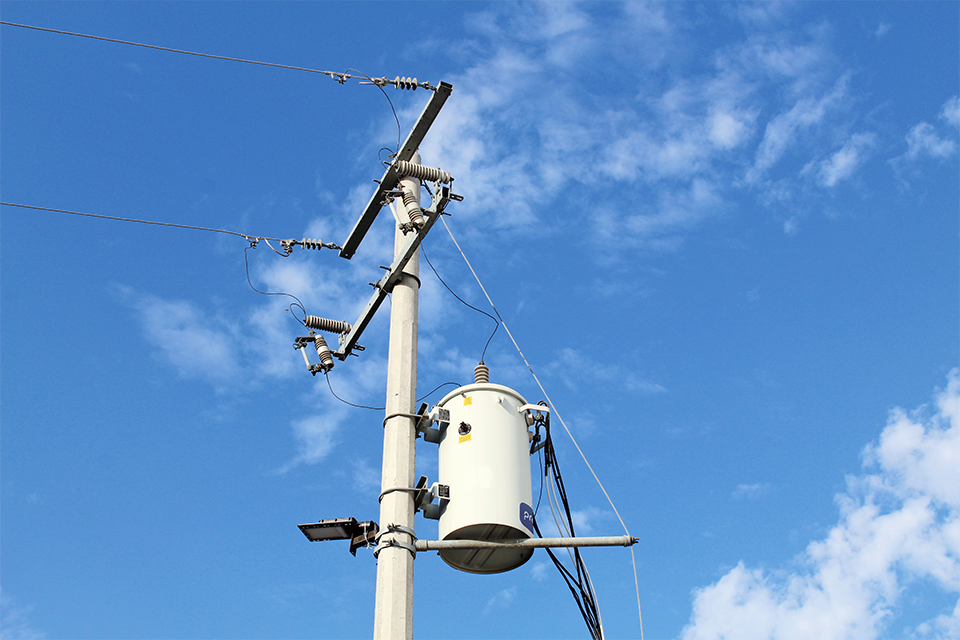Digital Substation
By R.W. Hurst, Editor

Substation Relay Protection Training
Our customized live online or in‑person group training can be delivered to your staff at your location.

- Live Online
- 12 hours Instructor-led
- Group Training Available
Download Our OSHA FS3529 Fact Sheet – Lockout/Tagout Safety Procedures

- Learn how to disable machines and isolate energy sources safely
- Follow OSHA guidelines for developing energy control programs
- Protect workers with proper lockout devices and annual inspections
Digital substations replace traditional analog systems with intelligent devices, fiber-optic communication, and real-time monitoring to improve grid reliability, automation, and protection. They enable efficient power distribution and support renewable integration.
What is a Digital Substation?
A digital substation is an advanced power system that uses intelligent electronic devices (IEDs), communication networks, and automation to improve grid performance.
✅ Enhances monitoring, control, and protection
✅ Replaces copper wiring with fiber optics
✅ Supports renewable energy integration and efficiency
It is a transformative innovation in power system infrastructure, replacing traditional analog measured data and copper wiring with digital technology, fibre optic cables, and intelligent devices. This evolution enhances the power grid's real-time visibility, control, safety, and efficiency. This article explores five critical dimensions of a digital substation. It presents actionable insights that go beyond current online content, following the E-E-A-T framework for credibility and authority.
Electrical Transformer Maintenance Training
Substation Maintenance Training
Request a Free Training Quotation
Core Architecture and Components
At its core, a digital substation uses intelligent electronic devices (IEDs), merging units, instrument transformers, and a process bus to digitize and communicate substation data. These digital devices transmit analog measured data and binary status through fibre optic cables, replacing traditional hard-wired systems and enabling flexible, real-time operations.
Emerging technologies are now expanding the capabilities of this architecture. Edge computing enables the localized processing of substation data, facilitating faster decision-making. At the same time, virtualization consolidates multiple control functions onto fewer physical machines, resulting in improved asset management and reduced physical footprint. Together, these technologies enhance the responsiveness, reliability, and scalability of a digital substation solution. To better understand the role of a digital substation within the broader grid infrastructure, see our overview on the electrical substation components.
Sign Up for Electricity Forum’s Electrical Substations Newsletter
Stay informed with our FREE Electrical Substations Newsletter — get the latest news, breakthrough technologies, and expert insights, delivered straight to your inbox.
Adoption of IEC 61850 Standard
The IEC 61850 standard defines the data model and standard communication protocols that enable seamless interoperability between devices within a digital substation. It governs how IEDs share real-time data across vendor platforms, including circuit breaker status, protection signals, and event logs.
Yet, transitioning to IEC 61850 poses challenges. Utilities often struggle with integrating the standard into existing infrastructure and dealing with legacy communication frameworks. Case studies from European and North American utilities have shown that successful deployment involves vendor-neutral testing platforms, phased rollouts, and in-house system configuration and maintenance training. Expert consultants also play a key role in resolving interoperability issues and ensuring system-wide compatibility. For insight into fault isolation and operational safety in digital systems, read our guide on the circuit breaker in substation and how it interacts with digital relays and IEC 61850 protocols.
Benefits Over Conventional Substations
The digital substation offers quantifiable improvements over conventional substation designs. These include:
-
Reduced maintenance costs: A major U.S. utility reported a 30% decrease in operational expenses due to real-time fault diagnostics and remote monitoring.
-
Faster fault response: Digital devices allow instant identification of issues, cutting outage response times by up to 40%.
-
Smaller footprint: Merging units and fibre optic cables replace large relay panels and heavy wiring, freeing up valuable space.
-
Improved safety: Digital communications replace manual signal wiring, reducing risks associated with arc flashes and equipment failure.
These benefits enhance performance and enable data-driven asset management and predictive maintenance, making the digital substation a foundation for the smart grid. The transition from conventional to digital substation design builds upon foundational concepts covered in what is an electrical substation.
Cybersecurity Concerns
With increased reliance on digital technology comes a heightened risk of cyber threats. A digital substation connected through open communications protocols can be vulnerable to data breaches, malware, and coordinated cyberattacks.
To address this, utilities are adopting advanced cybersecurity practices, such as defence-in-depth strategies that include multi-layered firewalls, encrypted traffic, and role-based access controls. Anomaly detection powered by machine learning is being deployed to monitor for unusual patterns in substation data. Additionally, some utilities are building security operation centers (SOCs) dedicated to real-time monitoring and defending digital substations. Research in cybersecurity frameworks specifically tailored to IEC 61850 systems rapidly evolves to meet this growing challenge. Digital substations often integrate seamlessly with substation automation systems to enable remote monitoring, real-time data analysis, and enhanced operational control.
Implementation Challenges and Future Outlook
Deploying a digital substation requires careful planning. Common barriers include high upfront costs, integration with existing infrastructure, and the need for skilled personnel. However, long-term operational savings and strategic grid flexibility make the investment worthwhile.
A practical implementation roadmap includes:
-
Pilot projects to validate technology performance
-
Training programs to upskill engineering and maintenance teams
-
Stakeholder engagement with regulators and vendors to align on technical and compliance requirements
Regulatory frameworks are beginning to support this shift by incentivizing modernization and promoting resilience against climate and cyber risks. As the global energy transition accelerates, the digital substation will play a pivotal role in enabling grid automation, integrating renewable energy sources, and providing real-time visibility across the power system.
Frequently Asked Questions
What is the difference between conventional and digital substations?
A conventional substation uses analog systems and hard-wired copper connections, while a digital substation uses fibre optic cables and IEDS to digitally transmit analog measured data, binary status, and control signals. This enables automation, remote monitoring, and faster system response.
FREE EF Electrical Training Catalog
Download our FREE Electrical Training Catalog and explore a full range of expert-led electrical training courses.

- Live online and in-person courses available
- Real-time instruction with Q&A from industry experts
- Flexible scheduling for your convenience
What is the standard for a digital substation?
The IEC 61850 standard governs the digital substation. It defines the data model and communication protocols to ensure interoperability and efficient data exchange between digital devices, such as IEDs and merging units.
What are the two types of substations?
The two main types are conventional substations, which rely on analog equipment and manual controls, and digital substations, which utilize digital technology and standard communication protocols for automated, intelligent operation.
The digital substation is not merely an upgrade—it's a reimagining of how the power grid can operate in real time. With improved safety, efficiency, and adaptability, supported by IEC 61850 and advanced cybersecurity, digital substation solutions are becoming essential to the future of energy delivery. Utilities that prepare today with training, planning, and innovation will lead the charge into a more intelligent, reliable, and secure energy future.
Related Articles







